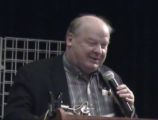VIDEO: "Thinking Like a Watershed: Eco-Assets Explained" – perspectives by Bob Sandford, Emanuel Machado, Kim Stephens and Michelle Molnar together capture the essence of the Comox Valley Eco-Asset Symposium

“An ecological approach provides a community with the ability to provide services to people at a reduced cost, with a reduced risk, and with tremendous benefits to the environment,” stated Emanuel Machado. “The challenges we have are three-fold: nature itself is under-valued, under-priced and over-used. Our built infrastructure is decaying at a faster pace that we can afford to replace it. And nature itself knows no boundaries, but we have no ability to plan at a watershed scale.”









